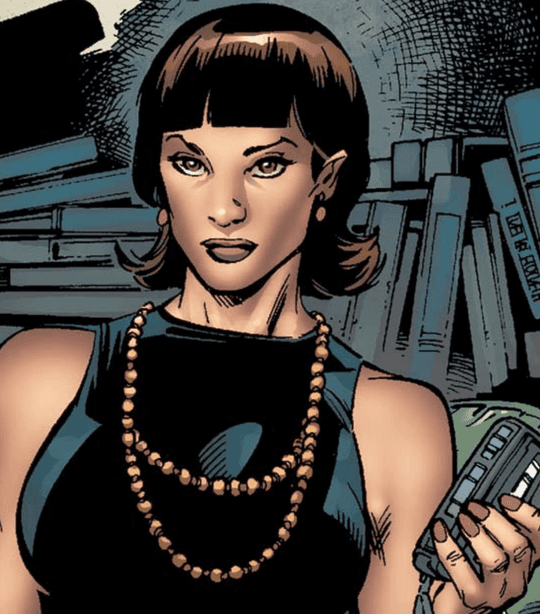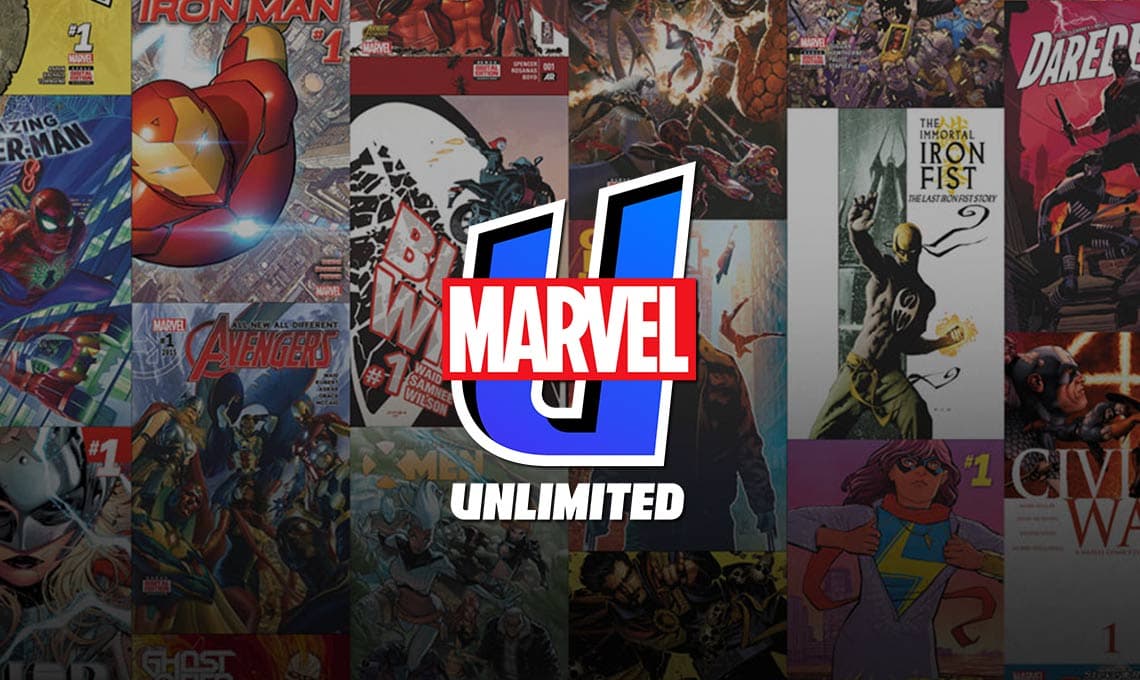History
History
Prizing truth above all else, the Daily Bugle becomes New York’s number one newspaper with J. Jonah Jameson at the helm leading top reporters like Ben Urich, Ken Ellis, Betty Brant, Joseph “Robbie” Robertson, and superb photographers like Peter Parker, AKA Spider-Man. Peter keeps his life as the friendly neighborhood Spider-Man secret from the prickly publisher Jameson, who makes it known in his newspaper how much he hates the wall-crawling menace.
First Edition
Since its founding in 1897, the Daily Bugle ceaselessly provides multiple daily editions and a singular devotion to news for over a century. Tabloid in format like its rival, the Daily Globe, its slogan is “the picture newspaper.”
A decade or two after its inception, the Bugle comes into the possession of William Walter Goodman, a dedicated public servant prizing the truth above all else, who lends his name to the Bugle’s building. In 1939, when the android Jim Hammond, AKA Human Torch, and Namor the Sub-Mariner both terrorize and protect the city, Bugle photographer Phil Sheldon photographs many of their exploits—the first but hardly the last time super-heroics and the Bugle are linked.
Following Captain America’s debut in late 1940, Bugle reporter Jeff Mace becomes one of his earliest imitators by taking the costumed identity of the Patriot, although he was just as often active as a correspondent alongside Mary Morgan and freelancer Jack Casey. Like “Deadline” Dawson, Jerry “Headline” Hunter, “Phantom Reporter” Dick Jones, Tom Powers, Red Skeleton, and other journalists of their day, Morgan and Casey prove that super-powers and costumed identities are not essential to courageous deeds performed in pursuit of knowledge and justice.
The exploits of the Howling Commandos and other United States military units are covered by C. Thomas Sites and others. Following the war, both Mace and Casey relocate to Boston, Massachusetts, although Mace soon returns to New York to join the All-Winners Squad as the third Captain America of the 1940s.
Workflow
For the following several decades, the Bugle becomes inexorably linked with J. Jonah Jameson, known for uncovering secret details of the Invaders’ wartime missions. Inspired by the World War II era Bugle editor Walter “Old Man” Jameson (often mistakenly assumed to be Jonah’s father) Jameson mimics his signature flattop and mustache. He rises through the Bugle’s ranks as copy boy, reporter, editor and editor-in-chief, championing civil rights and opposition to organized crime. Some twenty years pass and having already emptied his assets and inheritance to buy the Bugle corporation years before, Jonah purchases the entire Goodman Building on 39th Street and Second Avenue, housing the newspaper to which he had dedicated his life.
After moving the entire editorial and publishing facilities there, the building gets a new name: the Daily Bugle Building. The office complex is forty-six stories tall, capped by the Daily Bugle logo in 30-foot letters on the roof. There are loading docks in the rear of the building, reached by a back alley. Three floors are devoted to the editorial offices, two subbasements for the printing presses, while the rest remains rental space. Jameson takes the floundering Bugle and turns it into a popular success, after revitalizing the photograph-dominated tabloid format. J. Jonah Jameson Inc. also publishes magazines from time to time, including Now Magazine and Woman Magazine.
Jameson has a fiery temper, often taking it out on his staff and reporters, and impossible expectations of others. When he makes hand over fist for all Peter’s phenomenal photos of super-humans, he pays Peter a measly amount for them, so he clearly puts profit over people. Betty Brant seems to be the only person on staff who can meet Jameson’s high standards of his staff and tolerate his prickly personality.
Critics and Crimelords
While Peter Parker, AKA Spider-Man, has been on the Bugle staff as freelance photographer, he keeps his activities as the wall-crawler a secret. However, over the years, the Bugle has often been used for ultimatum deliveries by Spider-Man’s enemies. The offices have been the sites of some of Spider-Man’s battles with Dr. Otto Octavius, AKA Doctor Octopus, Richard Deacon, AKA Fly, the Mac Gargan, AKA Scorpion (later Venom), Adrian Toomes, AKA the Vulture, and many others.
Despite public embarrassment when reporter Frederick Foswell is exposed as the mobster known as the Big Man, the Bugle presses on. The Bugle’s crusade to expose organized crime earns it intimidating visits from Wilson Fisk, AKA Kingpin, Silvio Manfredi, AKA Silvermane, and other crimelords.
Newsroom Staff
In recent years, Jameson and the Bugle are among the Fantastic Four’s sharpest critics following their debut, and Jameson’s subsequent obsession with Spider-Man (secretly the Daily Bugle’s photographer Peter Parker) has long shaped the newspaper’s perspective on Super Heroes, centering around suspicion toward masked vigilantes and perceived elevation of superhuman feats above straightforward human achievement. Despite their suspicion, superhumans like Spider-Man often save them from Super Villains and career criminals. Reporter Robbie Robertson works hard to moderate the anti-Super-Hero views of Jameson, and while Jameson is a stubborn sort, Robbie eventually makes some headway in that regard.
The most notable Daily Bugle staff include aforementioned reporter and publisher Robbie Robertson, Ben Urich, reporters Ken Ellis, Irene Merryweather, Kat Farrell, reporter and co-owner Sally Floyd, secretary and investigative reporter Betty Brant, and photographer Peter Parker. Others that have joined the Daily Bugle include private eye and retired Super Hero, Jessica Jones.
Hot off the Presses
The Daily Bugle is renowned equally for its coverage of the Reed Richards, AKA Mister Fantastic and Susan Storm, AKA Invisible Girl (later Invisible Woman) wedding, sweeping features on the Savage Land, and challenging interpretations of the cosmic and occult phenomena that surround the superhumans of New York. Regardless of his straits, such as losing ownership of the Bugle to Puma, AKA Thomas Fireheart, Jameson has never hesitated to make Bugle resources available during such crises as the abduction of Mary Jane Watson, the misimprisonment of felony trial of reporter Robbie Robertson, and the trial of Peter Parker for murders committed by his clone, Kaine.
Following Jameson’s return to the helm, the Bugle received a much-valued infusion of new employees, including reporter Ken Ellis, who publicized the brief career of Ben Reilly, AKA Scarlet Spider, and photographer Angela Yin, sister of the quasi-ninja Meiko Yin, AKA Dragonfly. However, citywide damage inflicted by the psionic entity Onslaught resulted in equally widespread staff cutbacks, costing the Bugle the talents of many employees. One columnist, Jacob Conover, used the setback as further motivation for criminal activities as another incarnation of the Rose. Another reporter, Irene Merryweather, moved into a totally different arena when she became the ally and confidant of the time-traveling mutant Nathan Summers, AKA Cable. The Bugle was rescued from the red when Norman Osborn, AKA Green Goblin, bought it outright to better torment Spider-Man. Even during Osborn’s tenure, the newspaper’s quest for truth continued in its exposure of the fantastic, including anti-mutant Operation: Zero Tolerance and the mysterious Control conspiracy.
The Bugle faced decimation once again when Osborn, driven insane by a mystical ceremony, nearly destroyed it during a cataclysmic battle with Spider-Man. Free from Osborn's control, the Bugle’s operations were moved into a third building temporarily while the old building was reconstructed. The logo of a bugle adorned the top of each of the four sides of the building. The Bugle’s focus on the activities of superhuman heroes and villains remained key to its demographics, with some reporters, such as Kat Farrell, specializing in the field, where apparent deaths and resurrections are the bane of obituary writer Dilbert Trilby.
The investigations surrounding Daredevil’s exposure as Matt Murdock by the Daily Globe have spurred the Bugle’s efforts. But polarized some employees against top reporter Ben Urich (Daredevil’s confidant), who was vindicated in his earlier expose of the Green Goblin when Norman Osborn finally cracked and revealed his own secret identity while running riot. Despite lukewarm attempts to cover superhuman activity more objectively in its Pulse feature, the Bugle’s general editorial opposition to Super Heroes has remained unswayed, as exemplified by Jameson’s hatchet job on the debut of a recent Avengers lineup. The Bugle formally supported the passage of the Superhuman Registration Act, but the exposure of longtime photographer Peter Parker as Spider-Man dealt a temporary blow to its credibility. (Knowledge of Parker’s secret identity was later mystically erased from the world.)
Reporter Robbie Robertson and Jameson bring on private eye and retired Super Hero Jessica Jones onto a superhuman affairs column called The Pulse, but both subsequently quit the Bugle. However, after Jameson wrote a viciously negative editorial about the latest Avengers roster (including Jones’ husband Luke Cage), Jones angrily quit the Bugle. Ben Urich’s investigations of the so-called “civil war” between registered and unregistered heroes resulted in Urich quitting the Bugle as well, and joining reporter Sally Floyd in forming an independent newspaper, the Alternative.
The Goodman Building’s reconstruction was completed, and the Daily Bugle operations returned to 39th Street. However, with the paper in financial jeopardy, the Daily Bugle was sold to Jameson’s rival, Dexter Bennett, while Jameson recovered from a heart attack. Bennett renamed the paper “the DB!” turning it into a celebrity-packed tabloid and reviving sales but largely devoid of journalistic ethics. Robbie stays on as editor-in-chief for a while but resigned in protest when Bennett wouldn’t curtail his coverage of celebrity Bobby Carr, which was putting his life in danger. Betty remains and as such gets ostracized by her colleagues. She eventually joined the rest of the staff at the Alternative, now known as the Front Line after receiving mysterious funds from none other than J. Jonah Jameson.
When an attack by Maxwell Dillon, AKA Electro, leaves the DB! in ruins, Bennett does not rebuild, leaving the name open for the taking. Marla Jameson purchased the Daily Bugle shares back from Bennett, and Jameson gave Front Line the money they needed to rebrand itself as the new Daily Bugle.
Base of Operations
- Midtown Manhattan, New York City, NY
Current Members
- Ben Urich,
- Betty Brant
Former Members
- J. Jonah Jameson,
- Joseph "Robbie" Robertson,
- Irene Merryweather,
- Spider-Man (Peter Parker),
- Ken Ellis



